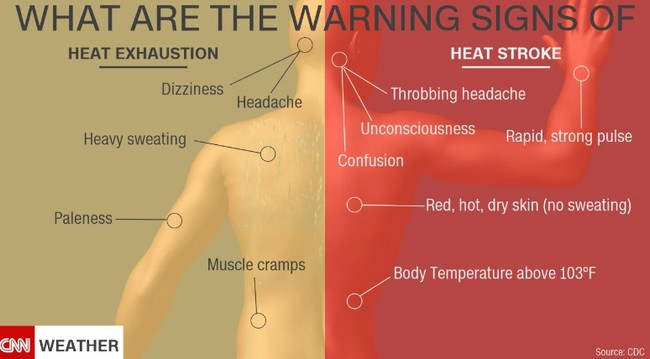Don't Sweat It! Avoiding Heat Stroke, Hot Flashes and Night Sweats
It’s been one really hot summer! Here in St. George, where I live, it has been between 100 and 110 for the past several weeks. When you’re out in that kind of heat, it’s natural to sweat, as it’s the body’s way of keeping cool. But, sometimes people are sweating for no good reason and that’s a problem. In this article we’ll talk about the purpose of sweat and how to regulate our body temperature in the heat, and how to deal with problems like hot flashes and night sweats.
When It’s Good to Sweat
Sweating is regulated by a part of the brain called the hypothalamus. Charged with maintaining core body temperature at around 98.6 degrees, the hypothalamus is able to influence many body functions that allow the body to conserve heat or increase heat loss. One of those mechanisms is to influence the tiny muscles in each sweat gland to either open or close.
When we sweat, evaporating water carries excess body heat away. While working in the summer heat, the body can lose as much as a gallon of water an hour to sweat. Furthermore, in dry desert climates, like the one I live in, a person may not even realize they are sweating because the sweat evaporates so quickly the skin stays dry.

That’s why it’s vital to know the signs and symptoms that indicate your body is overheating.
As the body dehydrates and starts to overheat, a person progressively develops heat cramps, followed by heat exhaustion and then heat stroke.
Heat cramps occur when the core temperature rises to 99-100 degrees. The result is thirst, irritability, headache, dizziness and profuse sweating.
When the internal temperature rises to 101-102 degrees, general weakness, decreased appetite, disorientation, confusion and shallow rapid breathing are added to the symptom list.
When the temperature reaches 103-106, a person can go into shock and may suffer delirium or seizures. When the body gets that hot, one can go into a coma, have a stroke and even die from the exposure to the excess heat.
If you’re going to be hiking or working outdoors in the heat, it is important to recognize these symptoms, so you know when it’s time to cool down. It’s also important to know this information for emergency preparedness. People don’t just die from exposure in winter when power outages cause their central healing to fail. People can also die in the summer when the air conditioning goes out. So, it’s important to recognize when your body is getting to hot and what to do about it.
First, when you’re hot, drink more water. Force yourself to drink more water than you think you need. The only way to know that you’re drinking enough water is if you are urinating freely and your urine is clear (unless colored by vitamins you’re taking).
You also need to eat a little
natural sea salt, because when we sweat, we also lose salt. Your body can’t hold onto the water you drink without some salt.
Secondly, seek some shade and take it easy. Exertion increases heat production and water loss. This is why people in the hot climate of Mexico have the custom of the afternoon siesta. They rest during the heat of the day and work during the cooler morning and evening hours.
Thirdly, you can also cool the body by reducing heat production, eat less fatty and calorie heavy foods and focus on watery, low calorie foods.
Antioxidant-rich berries and sour fruits, like lemons, limes, raspberries and wolfberries, reduce oxidation and therefore heat production. This is why they have been used to reduce inflammation and fever. This same heat-reducing action can help cool your body when it’s hot.
Thai-Go contains many of these sour, heat-reducing fruits, making it an ideal “cooler” for hot summer days. In the hot days of summer, I like to make a cooling beverage I call Thai-Go Lemon-Aid. This is simply making a lemon-aid base with freshly squeezed lemon juice and an equal amount of pure maple syrup. I add about three to five tablespoons of this sweetened lemon juice to cool water (adjust it to taste) and then add about one tablespoon of Thai-Go (again adjust it to taste).
When I really need to hydrate, I find that adding this to sparkling water makes a refreshing alternative to soda pop and hydrates me more rapidly. Drinking this while also consuming extra water and salt, helps me keep my cool when I have to work outside in the heat.


